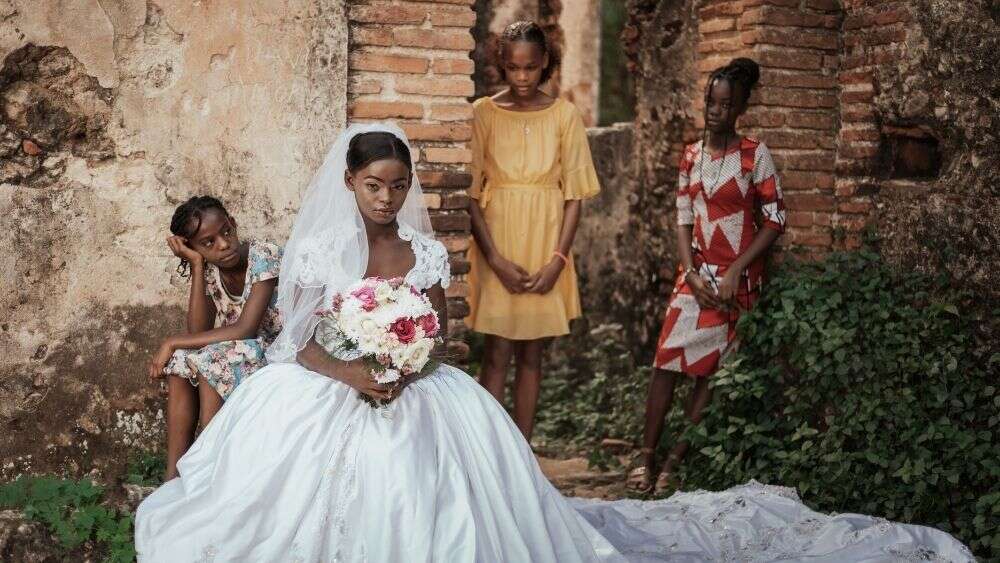Teenage girls campaign against child marriage for IWD
650 million girls in child marriages today
Teenage girls from countries where child marriage is rife have staged a photo campaign for International Women’s Day (IWD) to draw attention to the millions of girls forced into marriage.
The campaign, supported by the international aid charity Compassion Australia, marks the first anniversary of a UNICEF report that found up to 10 million more girls will be at risk of child marriage over the next decade because of the COVID-19 pandemic.
Four girls from Bangladesh, Ethiopia, Brazil and the Dominican Republic have taken part in a staged photo shoot in wedding dresses to remind the world that child marriage robs girls of their childhood, education and future choices.
Bangladesh, Ethiopia and Brazil are among the five countries that account for about half of the 650 million child marriages in the world today. Globally, around 21 per cent of young women were married before their 18th birthday.
While poverty is one of the leading drivers of child marriage, girls in higher-income nations are also at risk. In Australia, 92 cases of forced marriage were reported to the Australian Federal Police in 2020. Compassion Australia notes that the number of reported cases is likely to be only a fraction of total cases – both here and overseas.
School closures increase the marriage risk for girls by 25 per cent each year.
The COVID-19 pandemic has exacerbated the situation because of the closure of schools, which may cause girls to drop out entirely or be less likely to re-enrol. According to the UNICEF report, school closures increase the marriage risk for girls by 25 per cent each year.
“COVID has created a situation where we know that millions of children will not go back to school. Every girl who gets educated delays marriage and delays bearing children. The health of the mother, the health of the children and the health of the family is impacted for years to come, simply because of an early marriage,” says Sidney Muisyo, chief program officer for Compassion International.
The pandemic has also isolated children from social services and has plunged more families into desperate poverty.
“When a family is struggling with the basic necessities of life, like food, any child is an extra mouth to feed and if a girl can get married, that is one less mouth they have to worry about,” says Muisyo.
Local initiatives have helped to bring an end to child marriage in some countries, particularly in the wealthier areas of society. As a result of this progress, 25 million child marriages have been averted over the last decade.
However, this progress is yet to happen in poorer countries. For example, in sub-Saharan Africa, 37 per cent of young women are married before age 18. In this region, in the country of Niger, a staggering 76 per cent of girls are married before they turn 18.
In launching their campaign, the four girls are calling on the global community to join them in making a stand against the harmful practice of child marriage. A photo summary of the girls’ campaign – created with support from Compassion Australia – can be viewed here. Based on this, Eternity has pulled together a condensed, edited version of the campaign below.
Tisha, Bangladesh
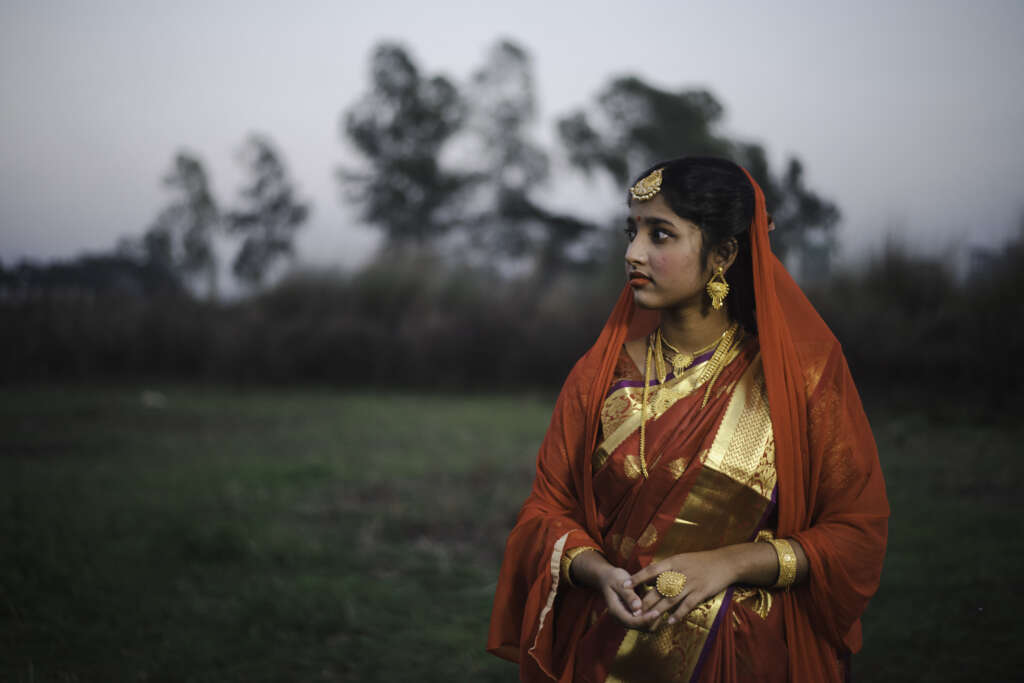 14-year-old Tisha from Bangladesh in a staged wedding photo shoot to protest against child marriage
14-year-old Tisha from Bangladesh in a staged wedding photo shoot to protest against child marriage
In Bangladesh, 15 per cent of girls are already married by age 15, and more than 50 per cent by 18 years old. Many are forced into marriage by their parents and/or a judge.
Tisha describes why she wanted to take part in the photo shoot: “I want to show my friends that there is so much we can do, and on the other hand, that there are so many problems they must face if they are married early. I also want their parents to see and learn so that they don’t follow this trend.”
She continues: “When I walk past their homes carrying books and a school bag, it hurts me to see girls my age instead washing dishes and providing service for their in-laws …
“I want to marry only after becoming a doctor, which is my dream. I want to stand on my own feet before I marry. I want to be a singer and painter before getting married and if all goes well, I want to help children’s homes and orphanages to rid my country of all the street children.”
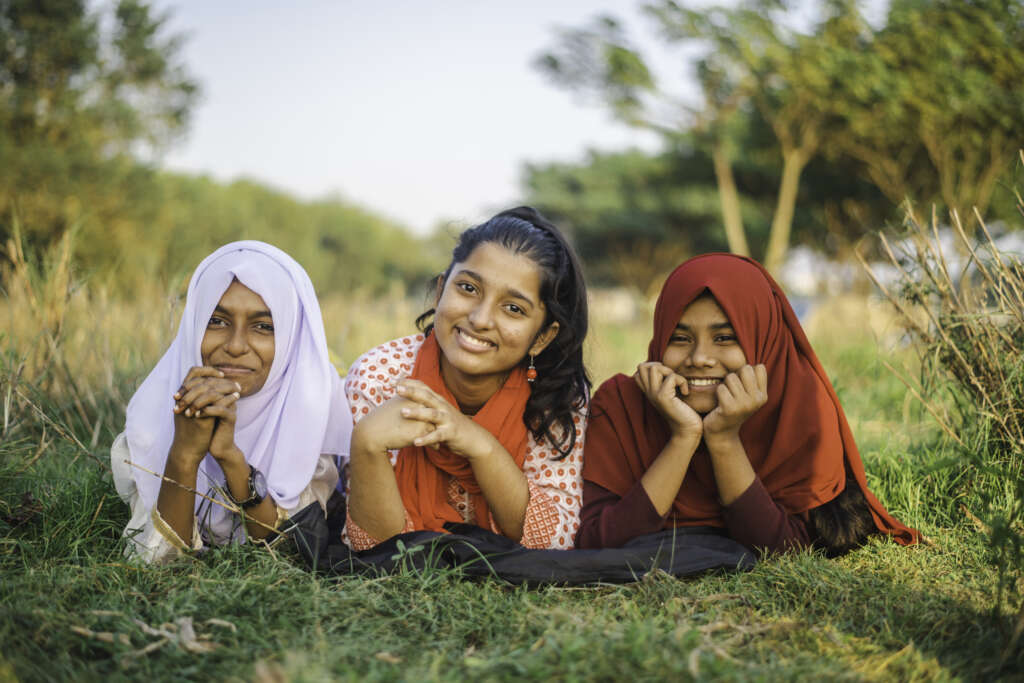
Friends Jharna (left), 14-year-old Tisha (centre) and Munira (right) Compassion International
Lauri, Dominican Republic
While child marriage was outlawed in the Dominican Republic in January 2021, child marriages continue unrecorded and unchecked. The Dominican Republic’s pregnancy rate among girls ages 15-19 is almost 50 per cent higher than the regional average for Latin America and the Caribbean. In 2013, 40 per cent of women between 20-24 reported having their first child before the age of 20 (World Bank, 2020).
Lauri explains her reason for taking part in the photo shoot: “I want girls my age to understand that getting married so young is not right, and I’d like their parents to understand the same thing,” she says.
“People and society don’t accept girls as they are. They see them as women, as adults … A girl who gets married young must drop out of school, dedicate themselves to cleaning the house, and take care of a child and a man that she doesn’t understand. Instead of moving forward, it is like her life has frozen.”
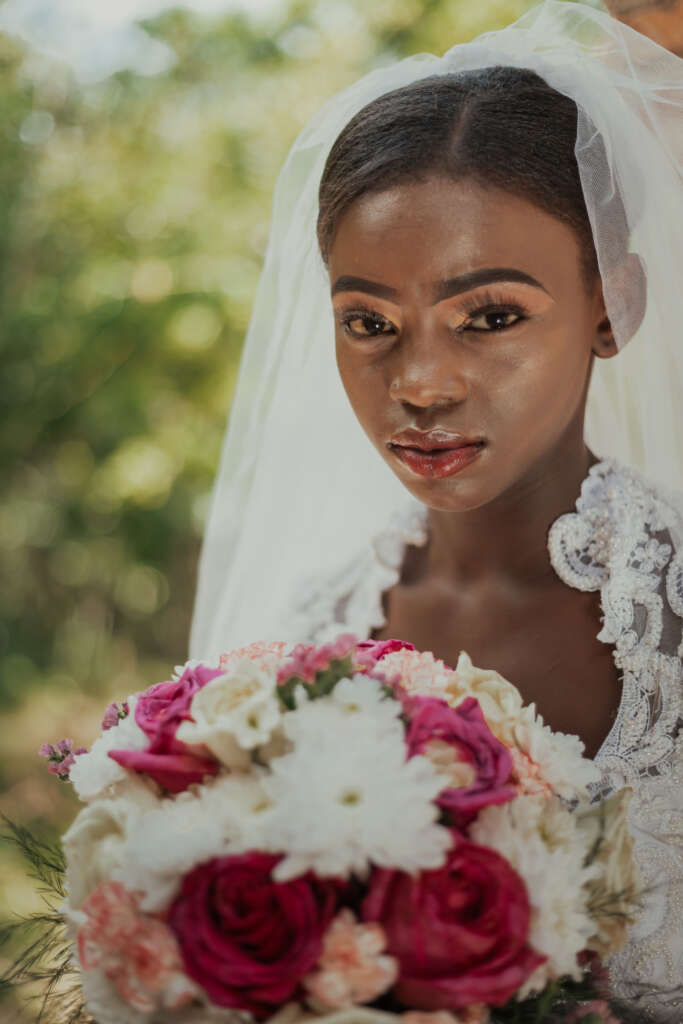
13-year-old Lauri in a staged photo shoot to protest child marriage Compassion International
Lauri’s friend Fracieli adds that she has a 13-year-old friend who has already lost a child and another 17-year-old friend with two children.
“I don’t even know how to cook rice, how I am going to think about marriage? Please, my friends, there’s so much you need to learn before even thinking about getting married. Take advantage of this time: read books, study, dream, play with your friends. Be who you are first – be a girl,” says Fracieli says.
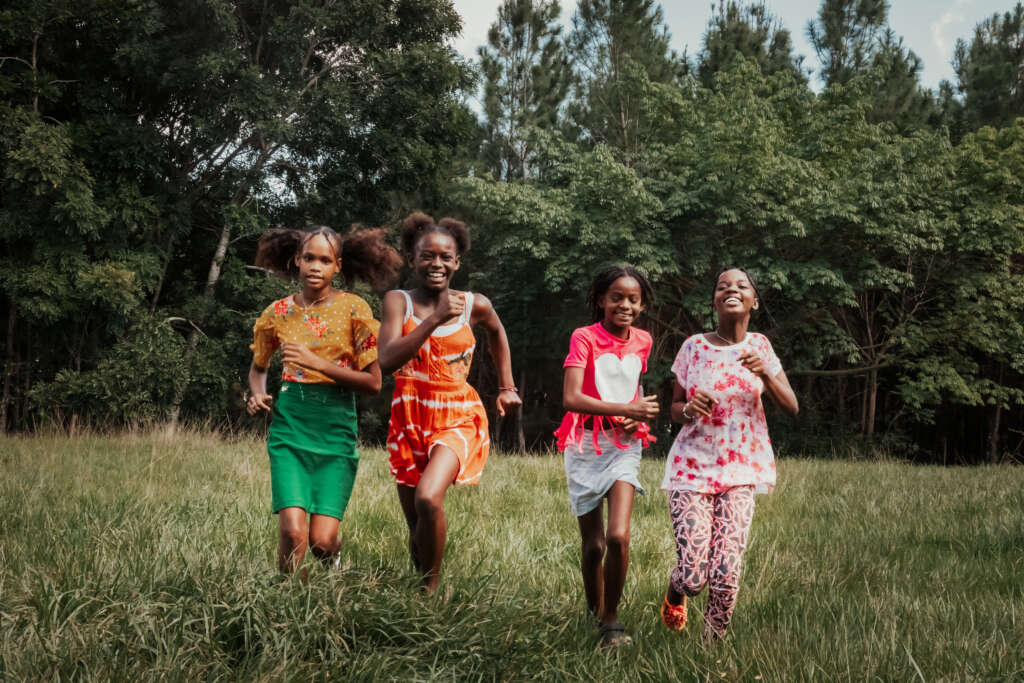
Friends Lisbeth, 13-year-old Lauri, her sister Laurelis and Fracieli in the Dominican Republic Compassion International
Mart, Ethiopia
Forty per cent of Ethiopian girls are married by 18. Mart is 14 years old and determined not to be one of them.
“Child marriage is so primitive,” says Mart. “Girls who are affected by this harmful practice go through a lot of hardship. They often quit school and shoulder the huge responsibility of raising children when they are children themselves. Girls should be in school. They should be allowed to pursue their education …”
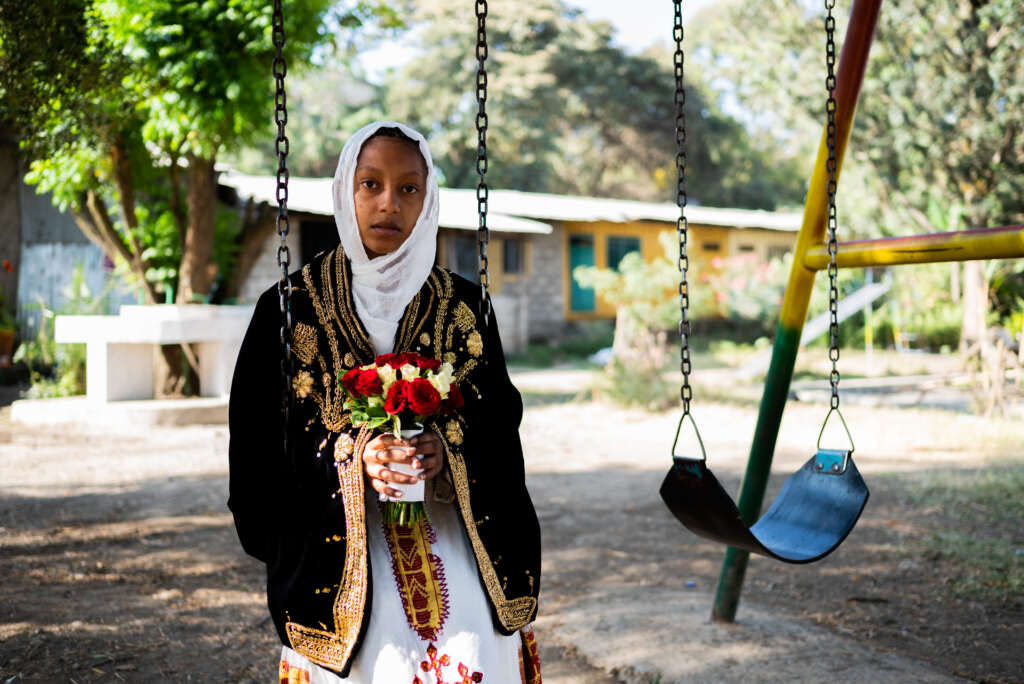
13-year-old Mart from Ethiopia in a staged wedding photo shoot to protest against child marriage Compassion International
“I want to tell parents that what they think is best for their daughter could potentially be dangerous when it comes to early marriage. They are holding their daughters back and standing in their way of their success. This practice is dangerous, and they shouldn’t put their daughters through it. The negotiated dowry could give immediate relief, but the girl’s future is much more important.”
Mart adds: “I want to … work and earn my own income. It is my dream to become an engineer and support my family for a while before I settle down.”
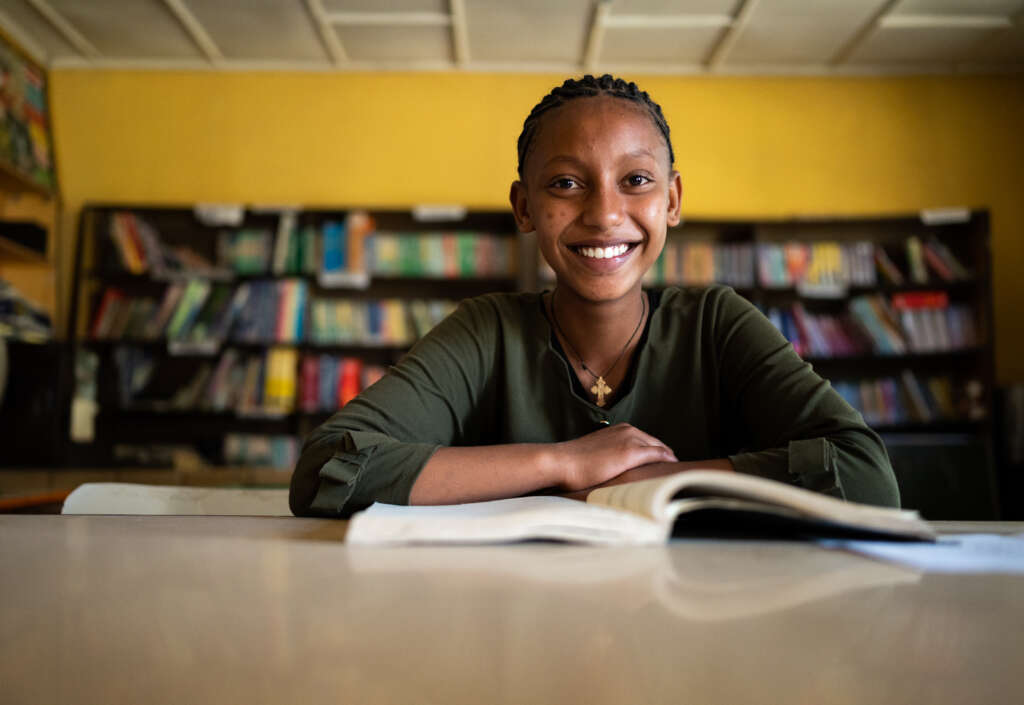
“I want to … work and earn my own income. It is my dream to become an engineer,” says Mart. Compassion International
Yolane, Brazil
Yolane is 14 years old and lives with her mother Maria and two older brothers in a rural area in northeast Brazil. According to UNICEF, Brazil has the fourth-highest number of child brides globally – over 3 million girls. Around 36 per cent of Brazilian girls are married before their 18th birthday.
Yolane’s older sister got married when she was just 14 years. Her mother was only 12.
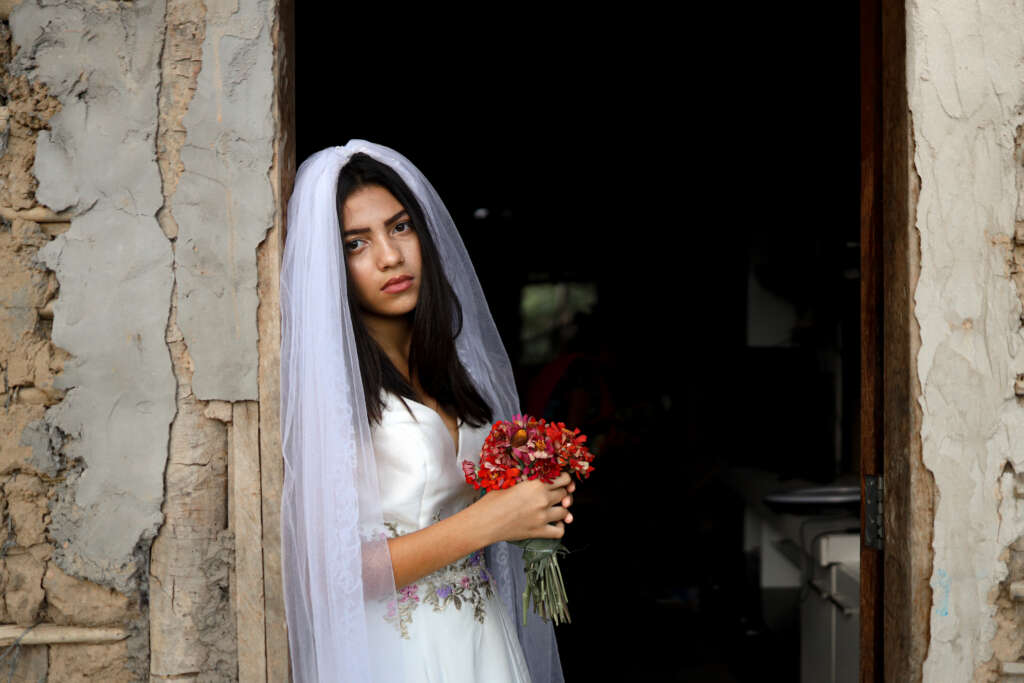
14-year-old Yolane from Brazil in a staged photo shoot to protest against child marriage Compassion International
“My grandmother tells me that my grandfather abandoned her with four children, and she suffered a lot to raise them while working in the fields. My mother, aged 12, was the oldest daughter and was responsible for doing all the chores at home. Life was tough.
“One day my father, aged 18, went to their house saying that he wanted to take my mother away to take care of her. He had fallen in love with her, wanted to marry her, and said he intended to take care of her and give her a better life. My grandmother allowed it. My father says that when he arrived home from work, my mother was always with her friends, playing with dolls. And so their marriage began. Even today, this story gives me goosebumps.”
Yolane also knows of a hundred other girls who also married at a young age, but she doesn’t want to follow in their footsteps.
She says: “Before I get married, I want to finish high school, go to college, and have a job … My biggest dream is to build a two-floor house for my family, with a pool in the backyard. The place we live in today was by me, my mother and my older brothers. We built this house with our own hands, using mud and wood.”
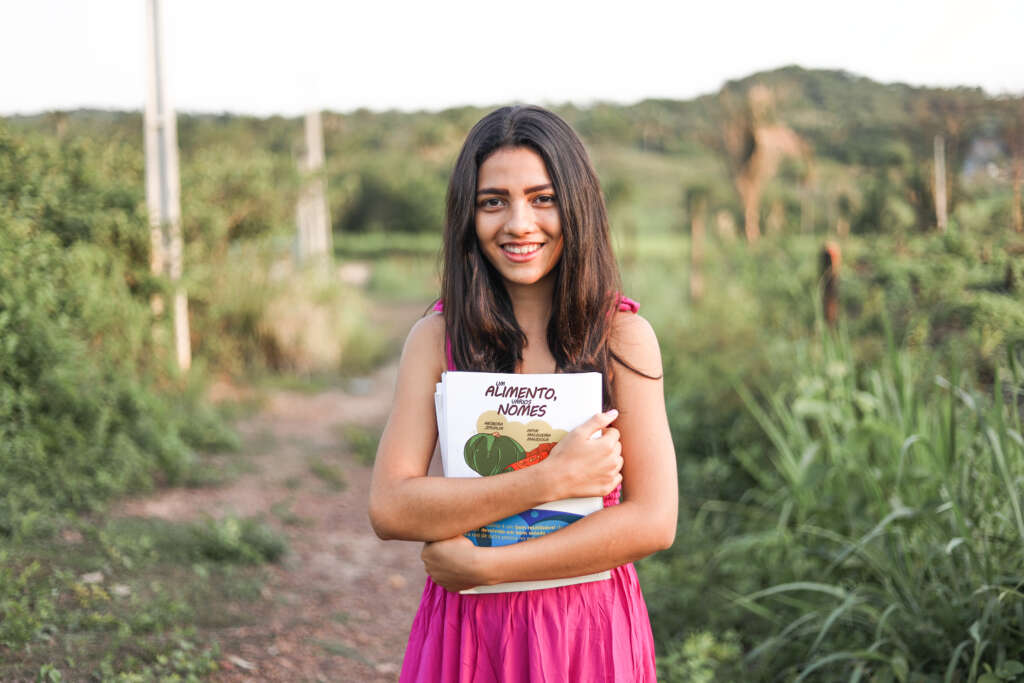
“Before I get married, I want to finish high school, go to college, and have a job,” says Yolane. Compassion International
Email This Story
Why not send this to a friend?
